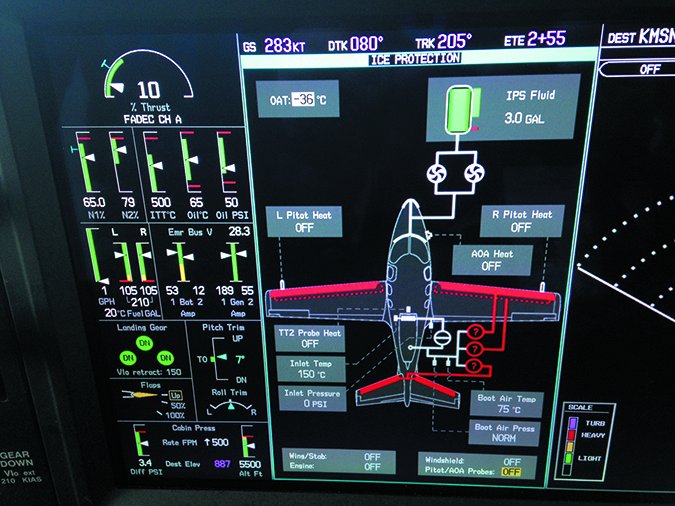The big announcement last month from Cirrus is that it achieved FAA certification for its Vision personal jet. With a couple of deliveries expected by the end of 2016—and perhaps as many as 50 or so for 2017—you can bet all eyes at the Cirrus flight ops department will keep a close watch on early adopters. Just how these Williams FJ33-5A turbofan-equipped singles will fare in the hands of jet-world newbies is anyone’s guess, but I asked Matt Bergwall at Cirrus what the training department is doing before the sales department hands over the keys to proud new Vision jet jockeys. After all, Cirrus learned some hard lessons in safety when it delivered its speedy piston-powered SR models nearly 17 years ago. According to Bergwall, planning for the piston-to-turbine transition actually started before the Vision was designed. That’s because from the very beginning, the Vision was designed specifically as a step-up aircraft for the Cirrus SR series owner-pilot demographic.

For example, slide into the Vision cockpit and the positioning of the throttle is similar to where it is in the SR22, as are the rocker switches for the batteries and generators. Although the Vision is equipped with Garmin’s G3000 integrated avionics, which Cirrus calls Perspective Touch, pilots familiar with the G1000 Perspective used in later-model SR aircraft should have a relatively easy avionics transition. While the Vision cruises at speeds north of 300 knots, Cirrus said it has climb and slow-speed handling characteristics similar to the SR22. But despite Cirrus giving its existing customers a head start, I can tell by talking with Bergwall that it isn’t attempting to oversimplify the Vision Jet transition. Cirrus—and the insurance companies that will cover new Vision pilots—knows that turbine-world step-ups present new challenges far beyond learning more advanced systems. The Vision cockpit isn’t the place to brush up on basic skills.
While the aircraft isn’t equipped for RVSM altitudes, it has a 28,000-foot service ceiling, so some transitioning (and aging) pilots will be faced with the additional workload of high-altitude ops, different descent planning and simply having to stay ahead of the aircraft, where things happen faster than they do in a piston single. These aspects are covered, in part, in the Cirrus Approach in-house type rating program—which kicks into high gear we’ll before a new owner might even think about flying the jet home. This includes a general skills analysis by a Cirrus instructor, perhaps a year before taking delivery. “If we can conduct a skills assessment flight with the customer while they’re current, we’ll have a better idea of what that pilot needs in terms of training to successfully fly the Vision,” Bergwall told me. There may be exemptions to the assessment process, including some professional pilots who currently operate turbine airplanes. They’ll still be required to take the Cirrus Approach type rating course and may complete it in roughly seven days, while an amateur may take considerably longer. Think in terms of proficiency-based—as opposed to time-based—training.
At this point, Cirrus doesn’t have plans to outsource the training. It’s currently setting up the Vision Center in Knoxville, Tennessee, where sales, delivery and training will take place. The transition includes a Perspective Touch course, which focuses on the Garmin avionics. A good portion of the Vision type rating training will be conducted in full-motion simulators, while early buyers will train in a production Vision that’s entirely dedicated for customer training. Cirrus wants every Vision customer to be type rated in the Vision before taking delivery because logically, that separates the anxiety of training from the stress and excitement of the purchase and delivery. There is also a mentoring period, where Cirrus instructors will accompany a new owner on his or her normal missions.
Cirrus has 600-plus delivery positions reserved for the $1.96 million jet, which has a CAPS airframe parachute and seating for five adults. Look for a full review of the Cirrus Vision Jet in a future issue of Aviation Consumer.





